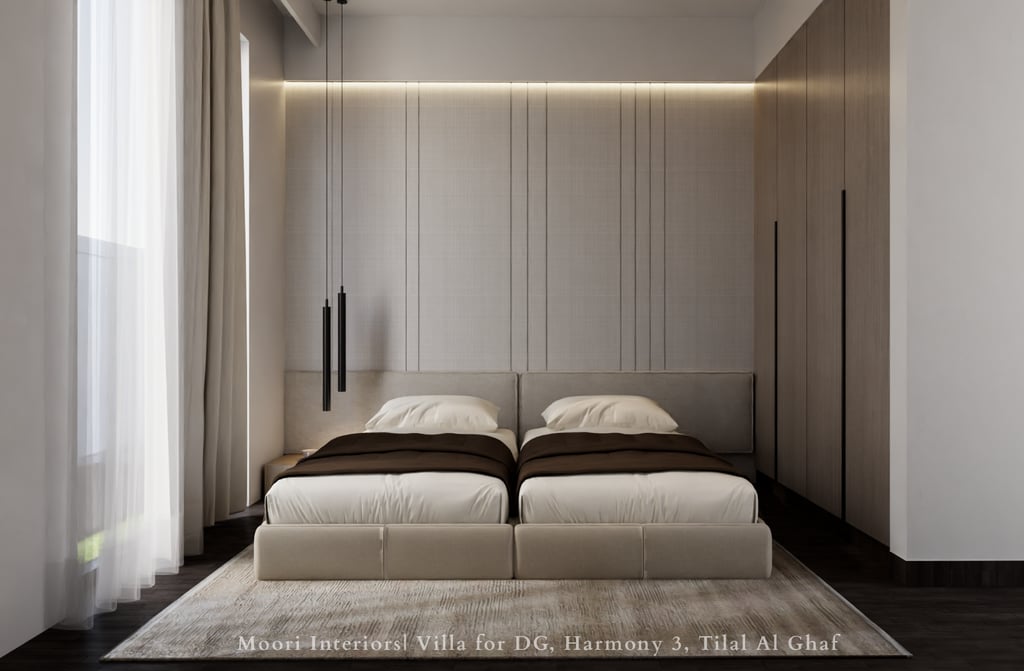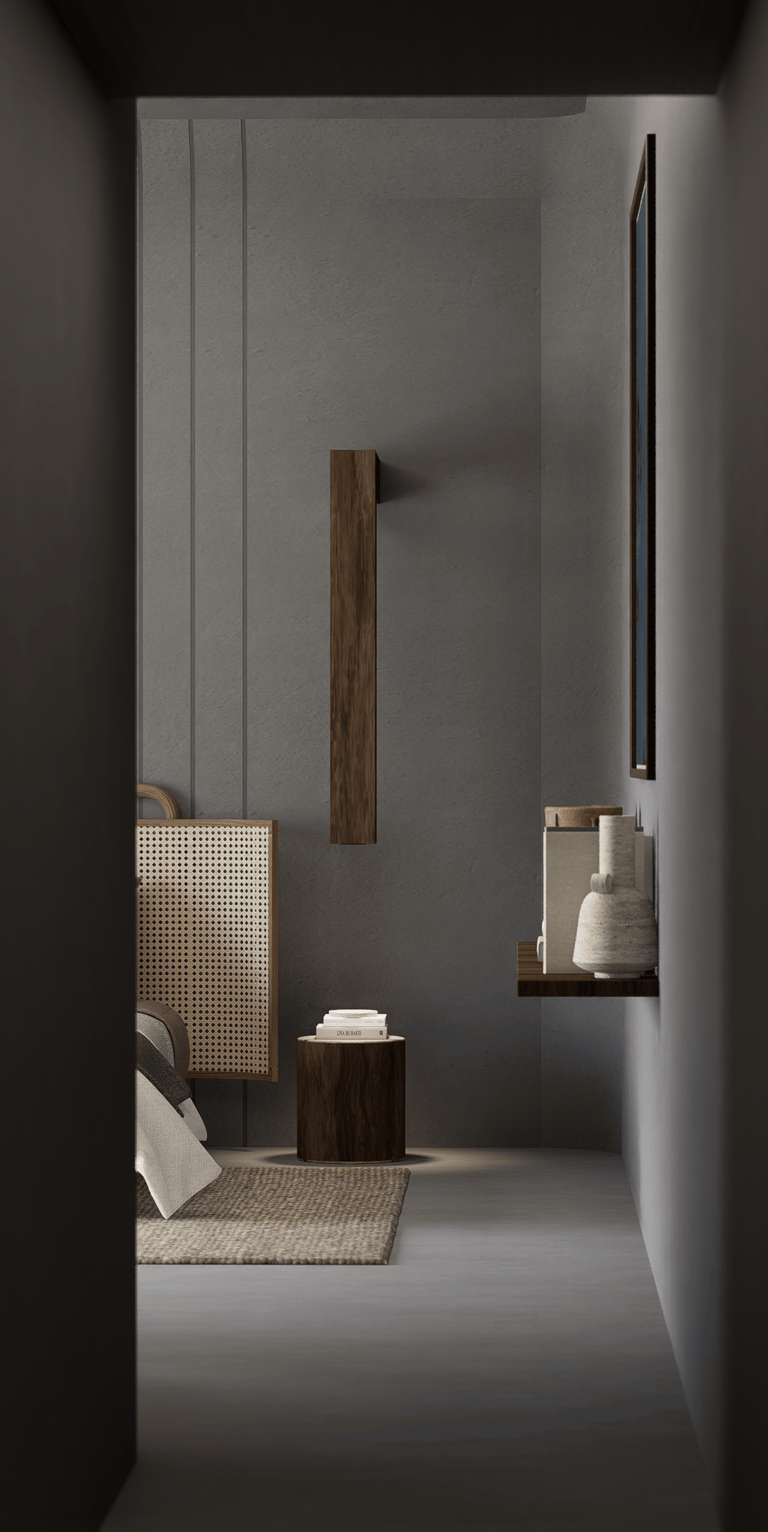Luxury Interior Design Bedroom | Modern & Quiet Styles
Explore luxury interior design bedroom ideas with a focus on modern minimalism and quiet luxury. Elegant inspiration by Dubai’s top interior designers.
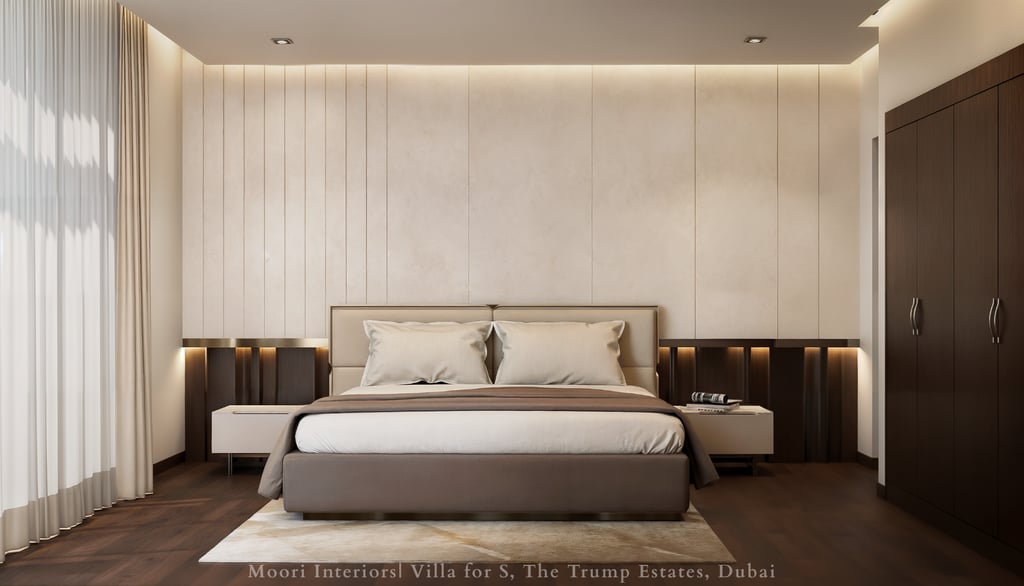

In a world defined by visual noise and ever-growing consumption, the minimalist bedroom stands as a quiet rebellion — a space where form meets function in its purest, most intentional expression. Far from stark or clinical, true minimalist design is about refinement, warmth, and a deep respect for materiality and light.
Luxury Interior Design Bedroom Ideas: Modern, Minimalist & Quiet Styles
Minimalism is, at its core, an expression of clarity — a quiet celebration of space, material, and intention. In the bedroom, it becomes an invitation to rest not only the body, but the mind.
This design philosophy has deep roots in both Japanese aesthetics and modernist European architecture. From the quiet restraint of wabi-sabi to Ludwig Mies van der Rohe’s famous assertion that “less is more,” minimalism offers not emptiness, but a distilled richness — where everything serves a purpose, and nothing is without meaning.
As architect John Pawson describes, true minimalism is about "the things that are left — the things that matter." It is not a style that demands silence, but one that allows space for reflection. In a minimalist bedroom, this means every finish, fabric, and fixture is chosen with care. There is no clutter — visual or emotional.
Minimalism, in its most elevated form, is not about taking things away. It’s about creating space for what truly belongs
The Philosophy Behind Minimalism
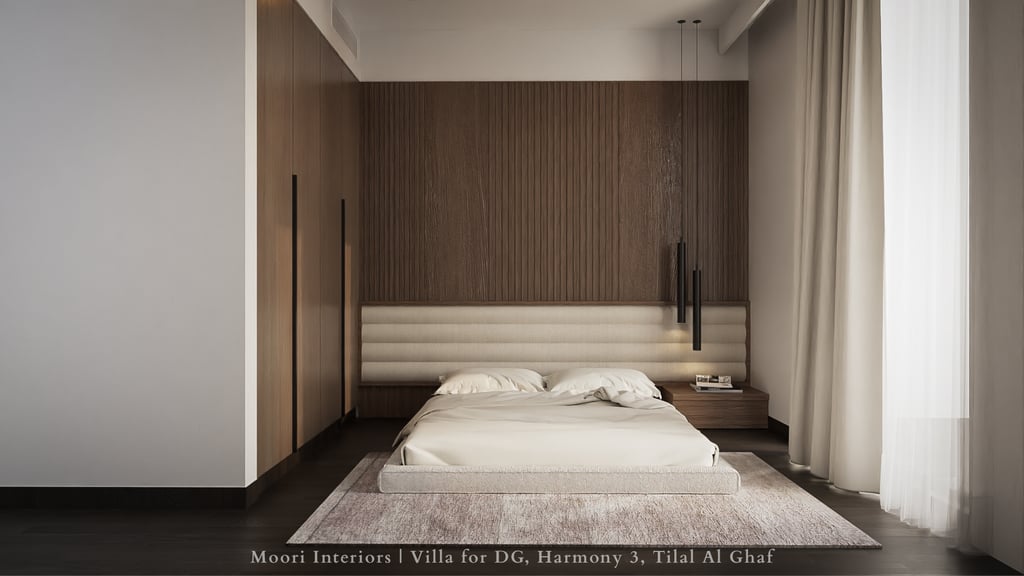

Designing the Minimalist Bedroom: Material, Colour, and Atmosphere
A Tonal Approach to Colour
Muted, tonal palettes anchor the minimalist bedroom. Think warm whites, soft greys, earthy taupes, and pale woods — shades that calm the eye and quiet the mind. Accents are restrained: brushed brass, matte black, or natural stone tones add subtle richness without shouting for attention.
Natural Materials & Honest Textures
Material choice plays a starring role in minimalist interiors. Linen, oak, microcement, and plaster finishes are favoured not for their boldness, but for their integrity. These materials patina with time — celebrating age, use, and touch. The bed might be upholstered in tactile boucle or heavy-weave linen, while side tables are carved from travertine or lightly stained timber.
Concealed Storage, Seamless Flow
The minimalist bedroom hides its functionality behind clean planes. Wall-to-wall wardrobes blend into the architecture with push-latch systems. Bedside tables float, lighting is recessed, and curtain tracks disappear into ceiling coves. Nothing interrupts the flow; everything is intentional.
Lighting as Atmosphere
Lighting is never an afterthought. A minimalist bedroom glows — softly and indirectly. Think concealed LED strips, sculptural wall lights, and dimmable ceiling fixtures. Natural light is maximised with sheer drapery that filters and diffuses, turning the bedroom into a daylong sanctuary.
Fewer Objects, More Impact
Styling is restrained but deliberate. One statement chair. A single ceramic vase. Art is minimal — often textural rather than graphic, like plaster reliefs or tonal abstract canvases. The minimalist room doesn’t ask for attention; it earns it through composure and coherence.

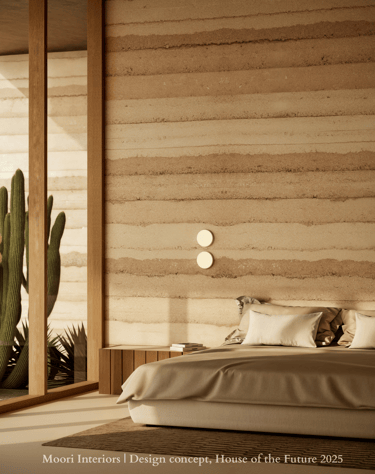
While the core principles of minimalist design remain constant — clarity, restraint, and purpose — their application varies across cultural and aesthetic contexts. Scholars of design theory describe minimalism not as a singular style but as a flexible framework, adaptable to regional sensibilities and individual preferences. From the textured warmth of Scandinavian minimalism to the quiet imperfection of Japanese wabi-sabi, minimalism encompasses a rich diversity of forms.
In the bedroom, these interpretations shape not only material and choices but also mood, atmosphere, and spatial composition — proving that simplicity never means sameness.
Minimalism: A Spectrum of Expressions
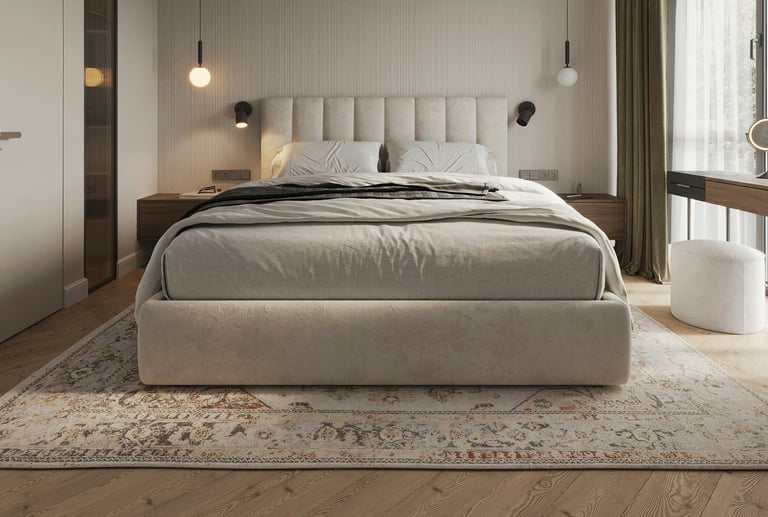

The Value of Minimalism in the Bedroom
Studies consistently point to a clear link between our environment and our stress levels. Cluttered surroundings have been found to increase cortisol, the hormone associated with stress, while simplified and organized spaces are known to foster relaxation, enhance focus, and contribute to better sleep quality. By reducing visual noise and prioritizing honest, high-quality materials, minimalist bedrooms foster an atmosphere of calm that aligns both with circadian rhythms and mental clarity — critical in an age of constant digital and sensory stimulation.
In this sense, minimalism becomes not merely a design preference but a subtle tool for enhancing daily life.
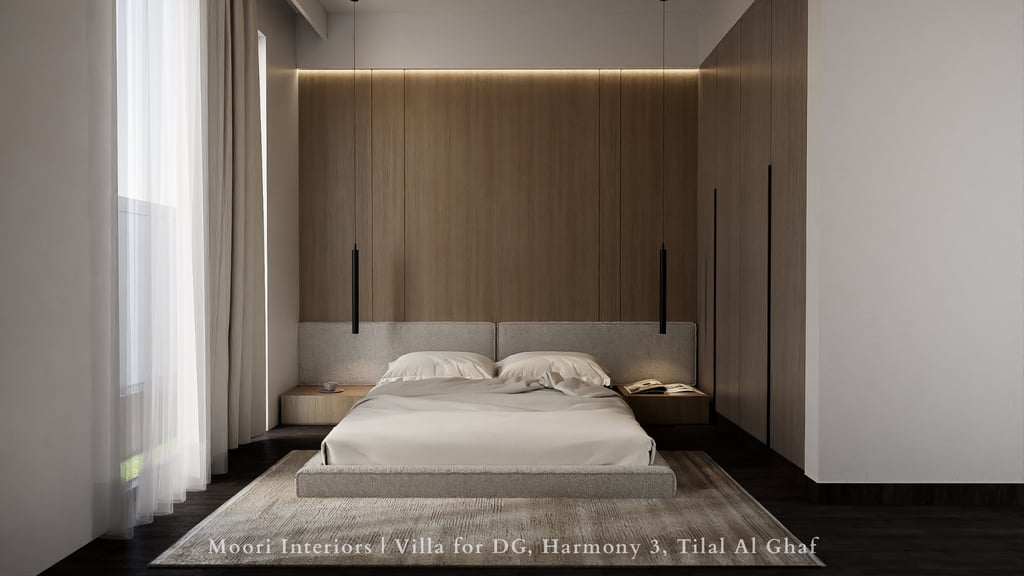

2. Modern Monochrome Minimalism
Rooted in modernist principles of contrast and clarity, Modern Monochrome Minimalism transforms restraint into visual strength. This style leverages the discipline of chiaroscuro — the interplay of light and dark — to sculpt space through sharp tonal distinctions: black-framed glass partitions, crisp white walls, and polished concrete surfaces co-exist in bold, deliberate harmony.
Furniture forms are low-slung, planar, and precise, emphasizing horizontality and architectural geometry. Lighting is not decorative but structural — recessed strips, track lighting, and sculptural pendants articulate volumes and define spatial boundaries without visual clutter.
Despite its simplicity, this style commands attention through scale, proportion, and spatial tension. Negative space becomes an active design element, allowing singular features — a cantilevered nightstand, a monolithic headboard, or a floating shelf — to hold focus.
Modern Monochrome Minimalism suits contemporary urban residences, particularly penthouses or city apartments in Dubai, where panoramic views and high ceilings complement its expansive, graphic aesthetic.
Minimalist Bedroom Design: Six Styles of Quiet Luxury
3. Japandi Style Minimalism
Japandi style represents a harmonious synthesis of Japanese Zen philosophy and Scandinavian functionalism, uniting two traditions that prize simplicity, craftsmanship, and natural materials. Rooted in the Japanese concept of wabi-sabi — the appreciation of imperfection and transience — this style embraces organic forms, asymmetry, and tactile textures that evoke quiet authenticity.
From the Scandinavian side, hygge contributes warmth and coziness through soft textiles, muted earthy palettes, and an emphasis on wellbeing. The resulting aesthetic balances shibui (subtle and unobtrusive beauty) with hygge’s inviting comfort.
Technically, Japandi design prioritizes natural proportion and biophilic elements — raw woods with visible grain, matte finishes, and hand-crafted furniture designed for ergonomic simplicity. Architectural features like shoji screens introduce translucency and modulate natural light, while low-profile beds and curved-edge joinery encourage a grounded, meditative spatial experience.
Together, these elements create a bedroom that is both serene and livable — a space where imperfection is embraced, function is elevated, and sensory calm is paramount.
4. Mediterranean Minimalism
Mediterranean Minimalism challenges the misconception that minimalism must be stark or cool by infusing warmth through natural, time-honored materials and textures. Rooted in the vernacular architecture of coastal regions, this style employs limewashed plaster walls, aged terracotta tiles, and rustic timber beams — all framed within a rigorous spatial discipline that avoids clutter.
The palette draws on sun-bleached earth tones, evoking both warmth and lightness. Architectural details such as plaster wall niches or raw-edge timber benches serve as purposeful focal points, while artisan-crafted ceramics punctuate the space with quiet sophistication.
This approach balances heritage and modernity, making it particularly suited to villas or heritage homes where a sense of place and continuity is essential — creating interiors that feel both grounded and elegantly restrained.
5. Desert Modernism
Desert Modernism draws inspiration from the raw beauty of arid landscapes and the clean lines of modernist architecture, emphasizing sculptural simplicity and natural harmony. Its hallmark lies in the interplay of texture and light—creamy microcement floors reflect subtle warmth, while expansive windows frame the shifting desert light, inviting an ever-changing dialogue between interior and exterior.
In Dubai’s climate, this approach is not only aesthetic but pragmatic: materials are chosen for thermal performance and durability, providing natural coolness and comfort. The palette remains restrained yet resonant — bone whites, sand tones, charcoal grays, and carefully placed rust or olive accents evoke the desert’s nuanced hues.
This style embodies a refined balance of place and purpose, where minimalist discipline coexists with tactile richness, fostering a serene sanctuary attuned to its environment.
6. Soft Luxe Minimalism
Soft Luxe Minimalism occupies a refined space where minimalism’s discipline meets tactile opulence. This style embraces plush textures and subtle layering — from boucle upholstery and silk drapery to veined marble and brushed metal accents — all curated to evoke warmth and understated luxury without sacrificing restraint.
Bespoke joinery and concealed storage maintain the signature clean lines, while whisper-quiet integrated technology ensures seamless comfort. Lighting is carefully layered, combining ambient, task, and accent sources to sculpt the room’s atmosphere throughout the day and night.
This approach transforms minimalism into an intimate retreat reminiscent of a five-star hotel suite, balancing indulgence and functionality. Here, simplicity is defined by meticulous craftsmanship and thoughtful sensory design, demonstrating that luxury is as much about subtlety as it is about quality.
1. The Warm Minimalist Bedroom
Grounded in the principles of simplicity and tactility, the Warm Minimalist Bedroom blends muted earth tones and natural materials to create a space that feels both calming and inviting. This approach transcends mere aesthetics, focusing on sensory richness and emotional resonance through layered textures and balanced composition.
This style is deeply influenced by phenomenology in design—the study of how materials and spaces are experienced sensorially and emotionally—transforming simple forms into inviting sanctuaries.
Natural materials like linen, oak, and woven textiles provide textural layering that engages touch and sight, creating a multi-sensory calm. The palette favors muted earth tones—pale taupes, soft greys, and warm whites—that flow seamlessly throughout, fostering spatial cohesion and psychological ease.
Brass and bronze accents introduce subtle warmth and reflect light gently, anchoring the space with quiet luxury. This restrained use of metallics embodies the principle of balance in design, where contrast enhances harmony without disruption.
Ultimately, the Warm Minimalist Bedroom is an exercise in intentionality, where every material and hue is selected to nurture serenity and presence—crafting a space that feels curated, grounded, and deeply restorative. a
At our Dubai interior design studio, we explore and tailor these variations to reflect our clients’ individual rhythms, tastes, and lifestyles.
Here, we present six distinct minimalist bedroom styles that balance restraint with richness, offering timeless expressions of quiet, enduring luxury.
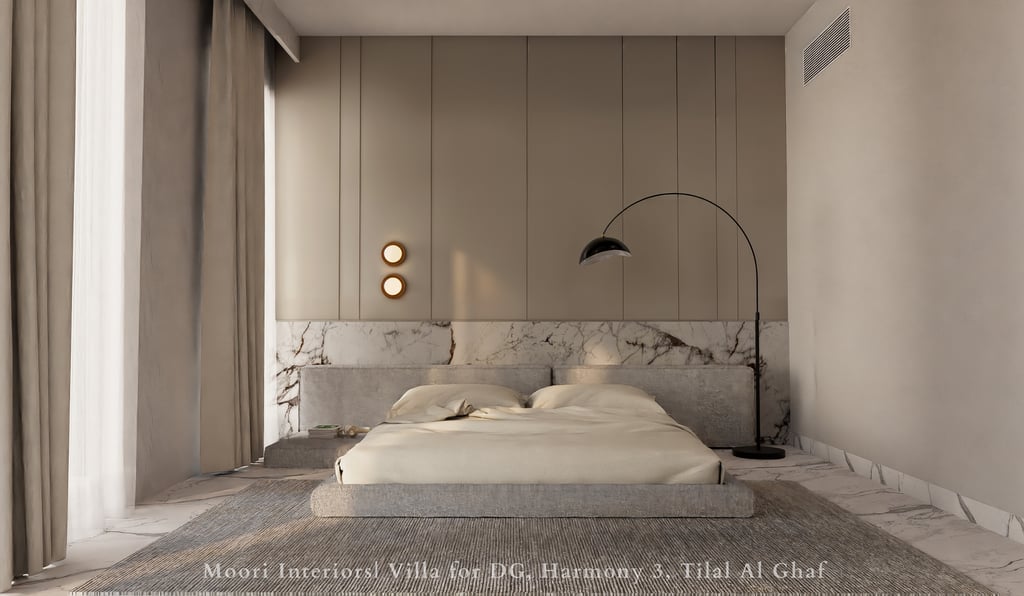

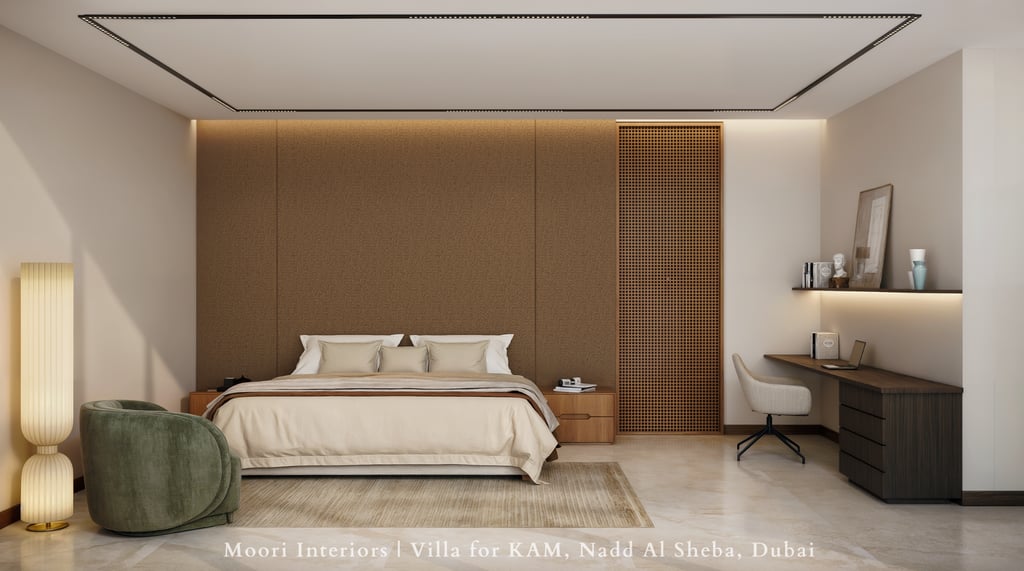

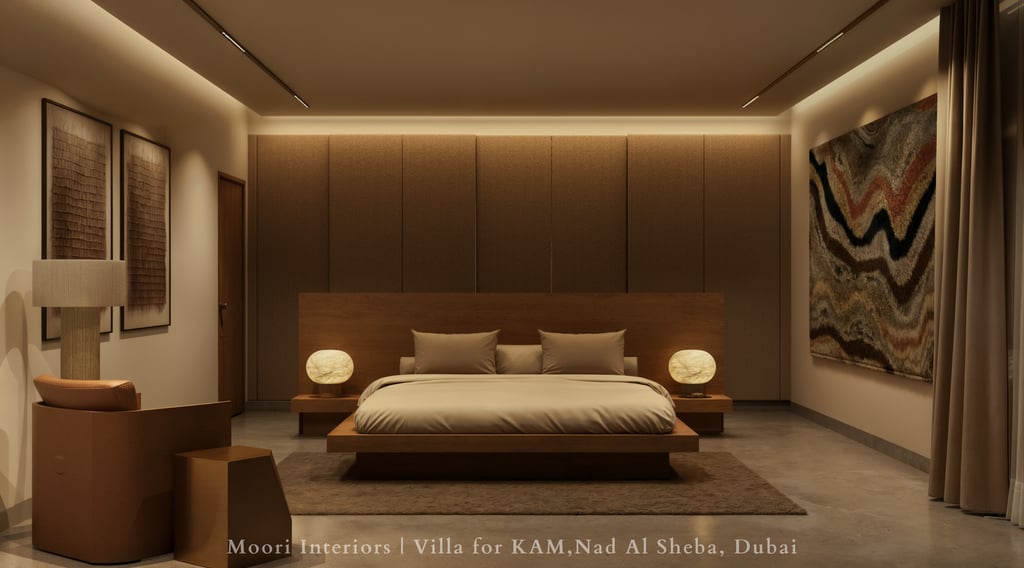

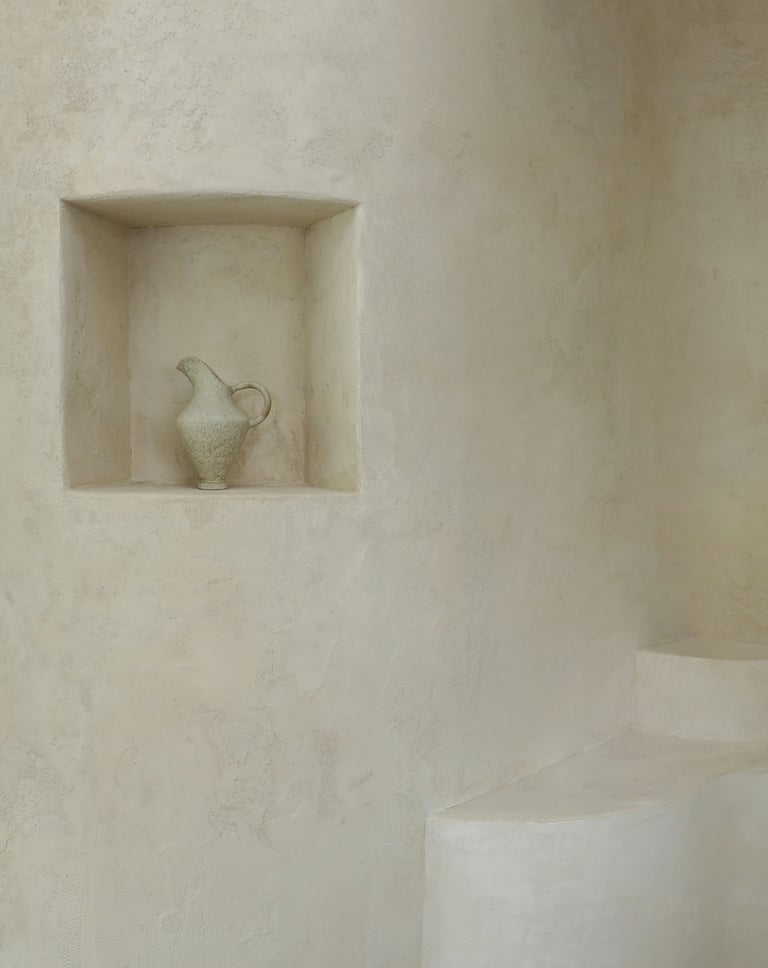

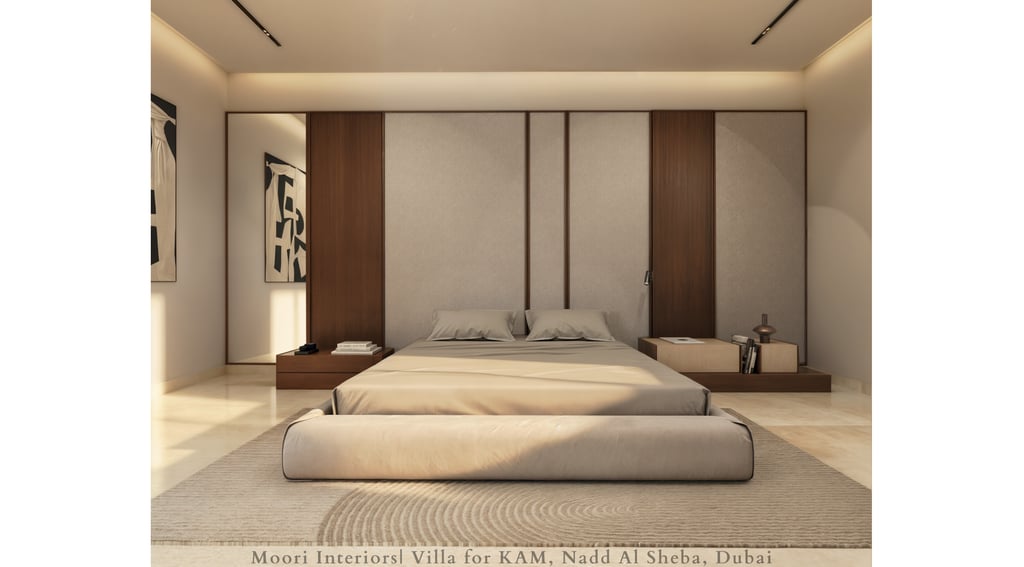

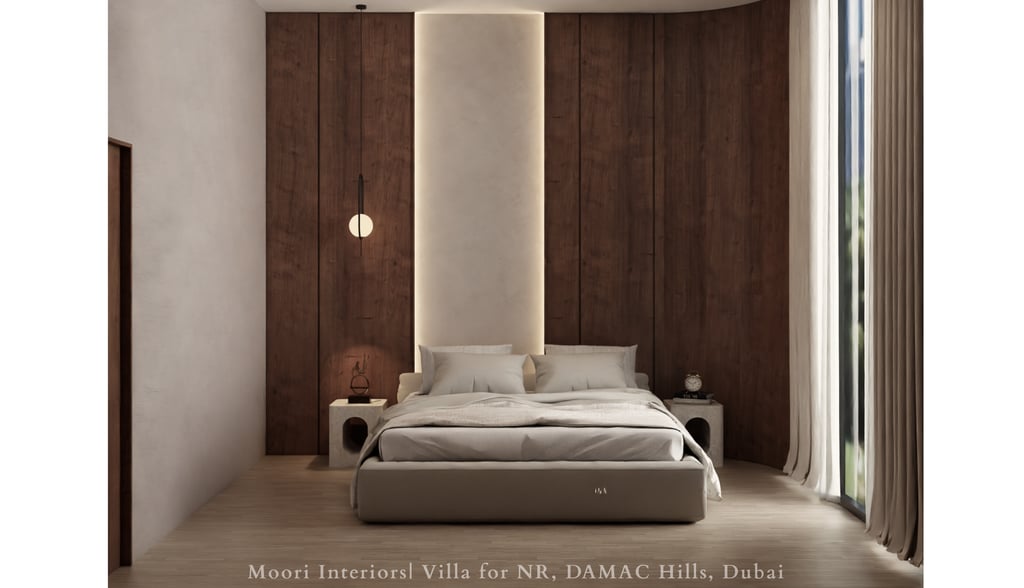

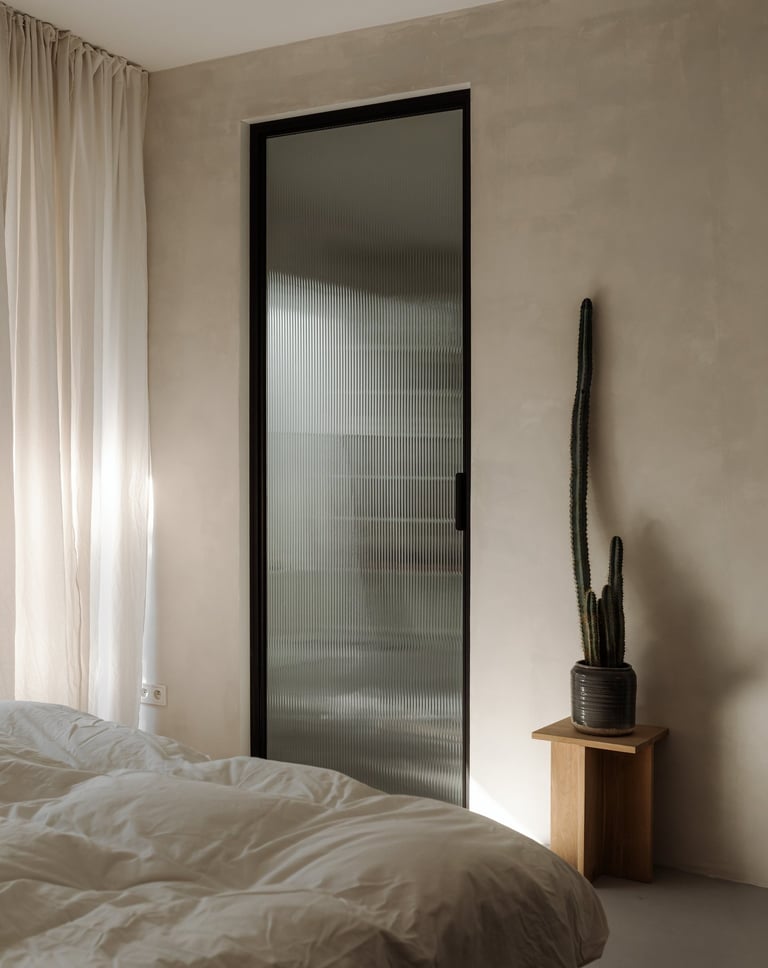

Minimalism as an Enduring Lifestyle
At Moori Interiors, we approach minimalism not as visual reduction, but to elevate function, material integrity, and spatial experience.
Whether expressed through the quiet warmth of natural textures or the discipline of monochrome geometry, minimalism offers a timeless framework for creating spaces that endure — spaces where every element is essential, and nothing distracts from the whole.
In this sense, minimalism does not signify absence, but presence: of thought, of purpose, and of quiet luxury.
